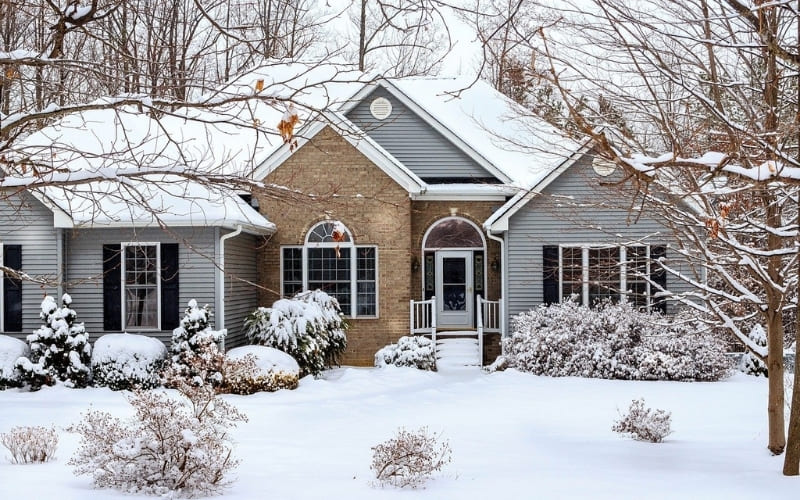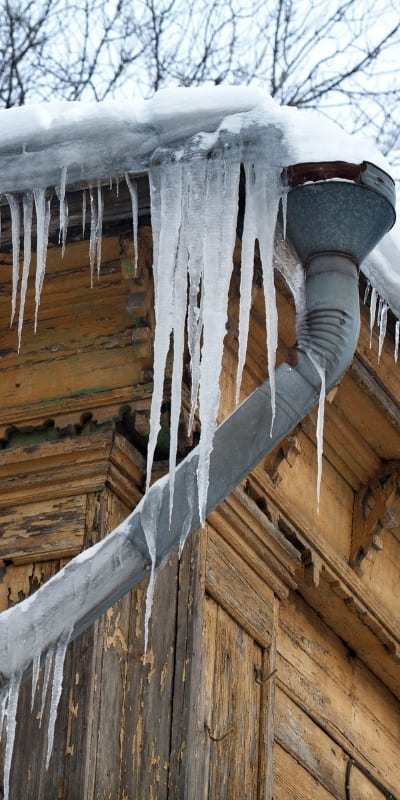

How to Winterize a House in Des Moines, Iowa
Have you been wondering how to winterize your home? Our checklist will help you stay warm and dry no matter what the weather in Des Moines this winter.
Preparing your home for winter weather can be as simple as following these recommendations. We have listed off these 8 simple recommendations for you to help with this process.
1. Schedule a Furnace Service Call
Home maintenance problems always seem to happen at the worst possible times. Your air-conditioner breaks down on the hottest day of the year, or your furnace stops working on the coldest. Fortunately, it’s easy to avoid trouble by scheduling a service call at the beginning of the heating season. During the call, the technician will replace filters, clean the fan and blower, and make sure the system is running safely and efficiently.
2. Check for Drafts
Air leaks around windows and doors allow hot air to escape and can create the perfect conditions for rot or mold. Have you been wondering how to winterize windows? Popular Mechanics offers instructions for caulking and explores the various weather stripping options available. You’ll also want to check for drafts in your attic, around electrical outlets, and in the areas where pipes or wires enter your home.
3. Prune Your Trees
Damage to your house or car can occur if tree branches break due to the weight of ice or snow. Trim any branches that are close to your house or overhang your driveway or garage.
4. Prevent Ice Dams
Ice dams trap melting snow on your roof. With nowhere to go, the water enters your attic and soon saturates walls and ceilings in your home. Reduce the risk of an ice dam by cleaning your gutters before the first snowfall. If you have a flat root, buy a roof rake to remove snow after heavy snowfalls. If you’re planning on renovating your attic, your remodeling company can take steps to prevent ice dams from damaging your new bedroom, home theater or game room.
5. Insulate Your Pipes
Wrapping your pipes offers two important benefits. Water in the pipes stays warmer, and pipes don’t freeze on bitterly cold days. Adding insulation to pipes doesn’t take long but can help you avoid a flooded basement due to burst pipes. Foam insulation with pre-cut slits is available at home improvement and hardware stores.
6. Fill Foundation Cracks
Small cracks in a foundation often occur as a home settles. Although these cracks don’t usually affect the stability of your basement, they do provide convenient pathways for water to enter your home. Filling cracks with a hydraulic cement mixture will prevent water from dripping down your basement walls. If you’re planning a basement remodeling project soon, it’s a good idea to get moisture problems under control.
7. Test Smoke and Carbon Dioxide Detectors
December, January and February are the peak months for heating fires, according to the National Fire Protection Association. Carbon monoxide poisoning rates also increase during the winter due to issues with furnaces and chimneys. Test your detectors at the start of every season and replace batteries or non-functioning detectors promptly.
8. Schedule a Chimney Cleaning
A chimney cleaning is a must if you plan to use your fireplace this year. Obstructions or debris in the flue can cause chimney fires or carbon monoxide poisoning. Even if you don’t have a fireplace, it’s a good idea to have your chimney cleaned and inspected periodically.
Why Remodel in Des Moines?
There’s nothing more satisfying than enjoying a relaxing day at home while a winter storm rages outside. If you’d rather be anywhere else but home, a remodeling project can help you turn your house into the perfect winter retreat. Contact us and let us know how we can help you improve your home.
.png?width=455&height=131&name=mbg_shirt_whitelogo%20(1).png)

